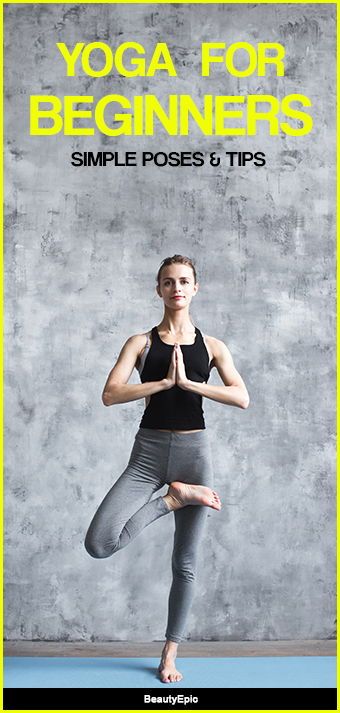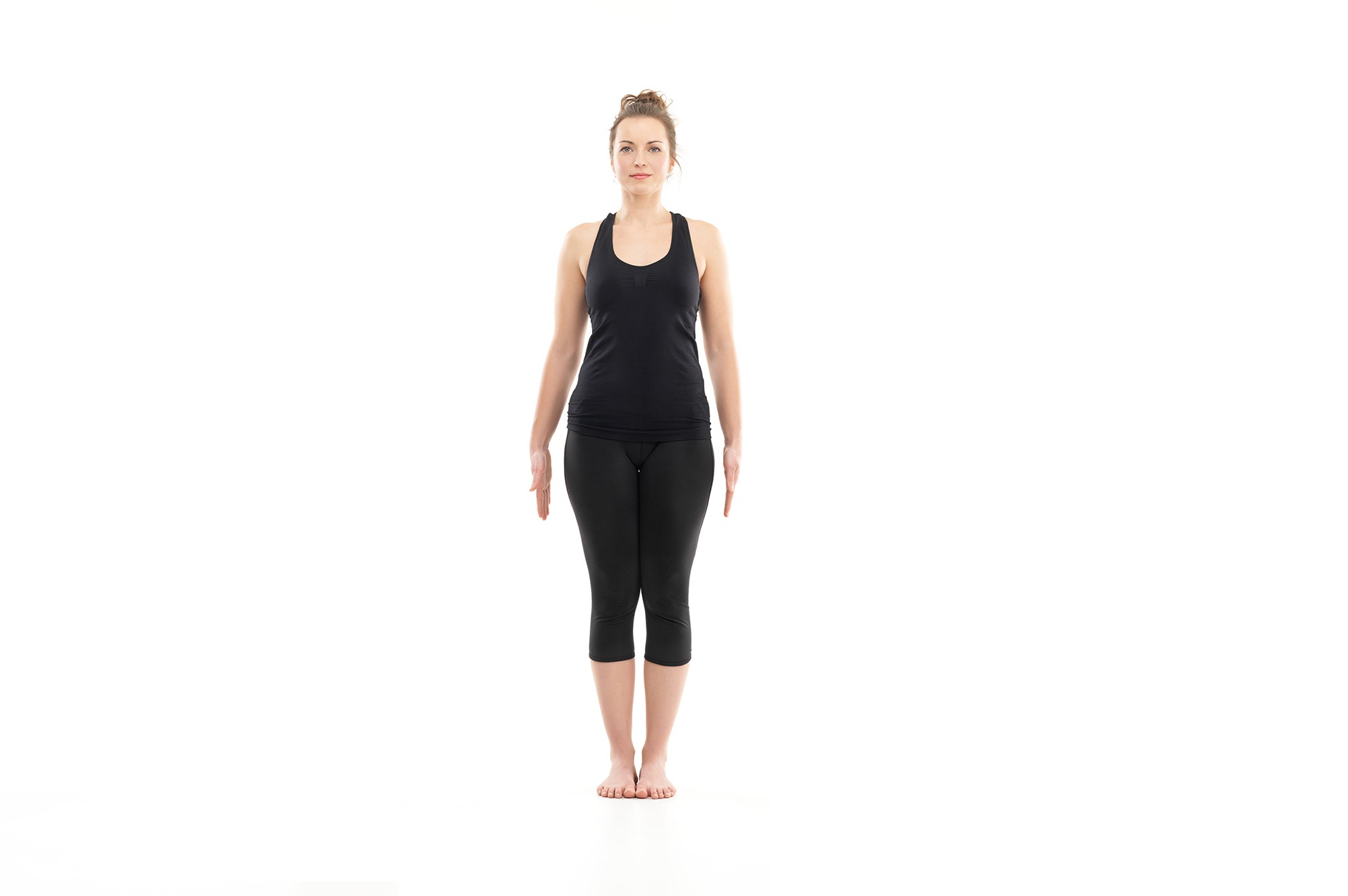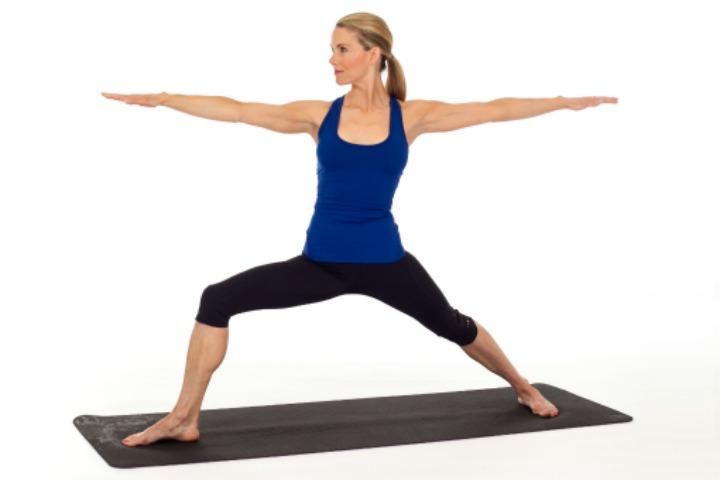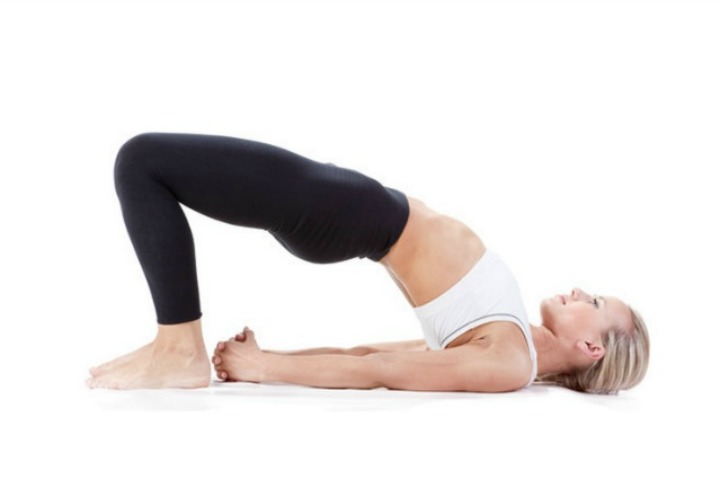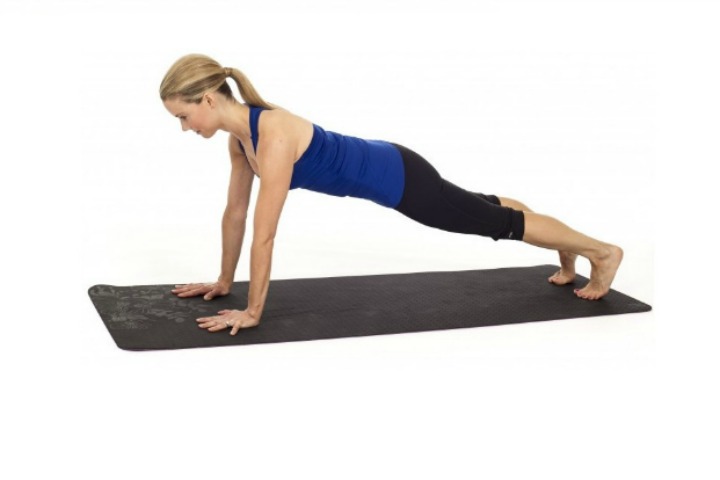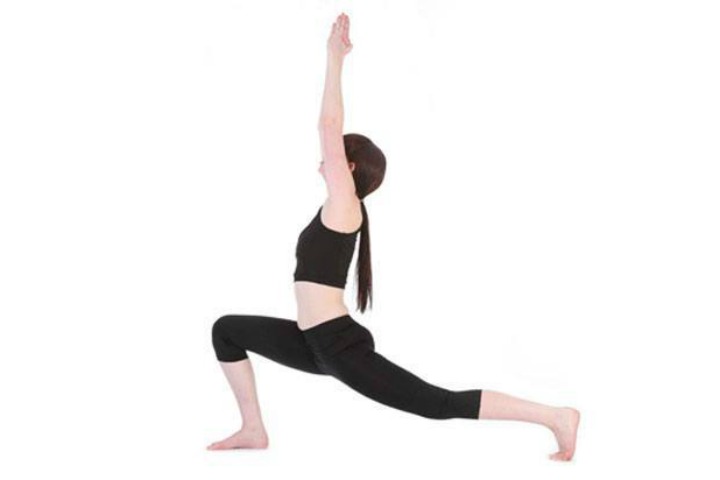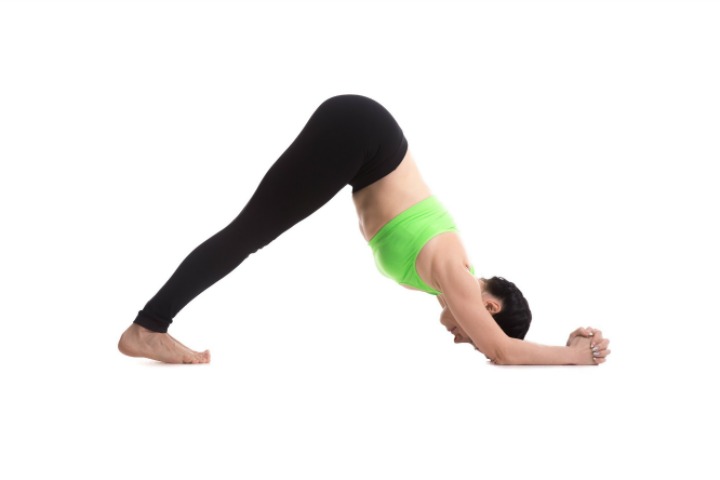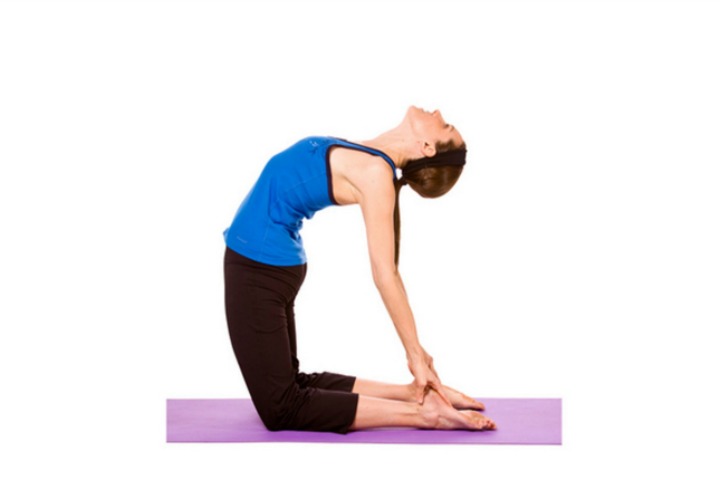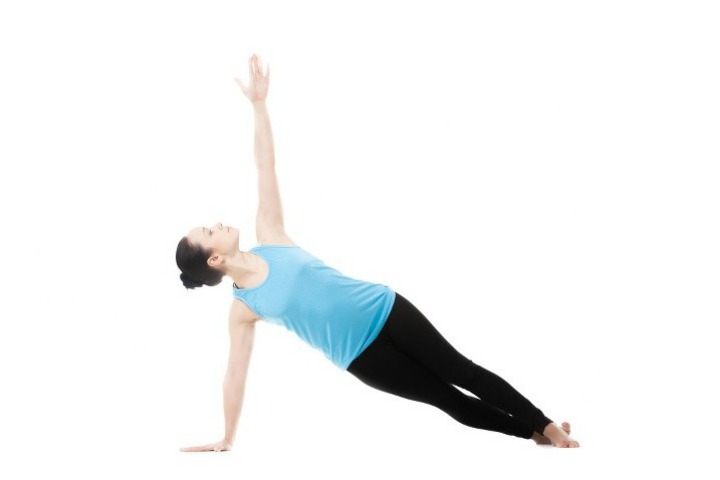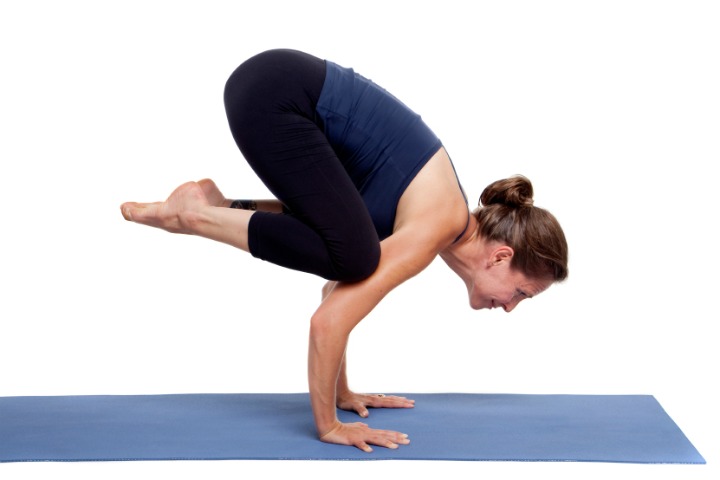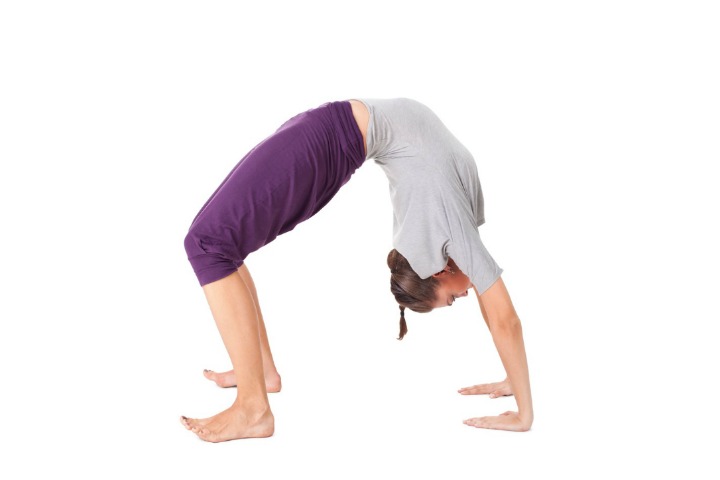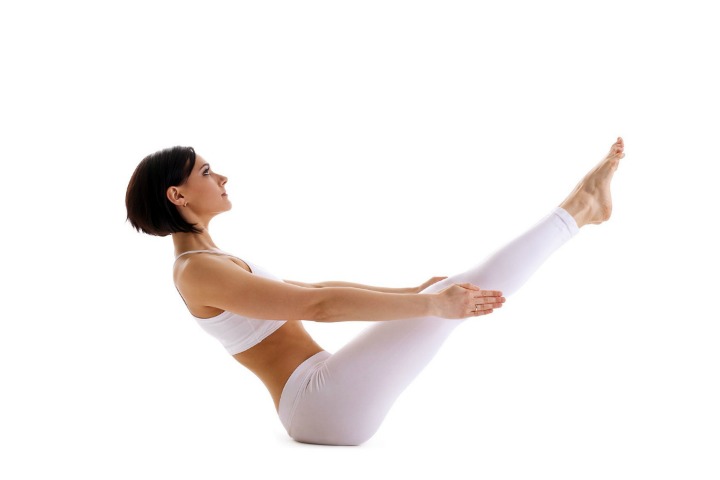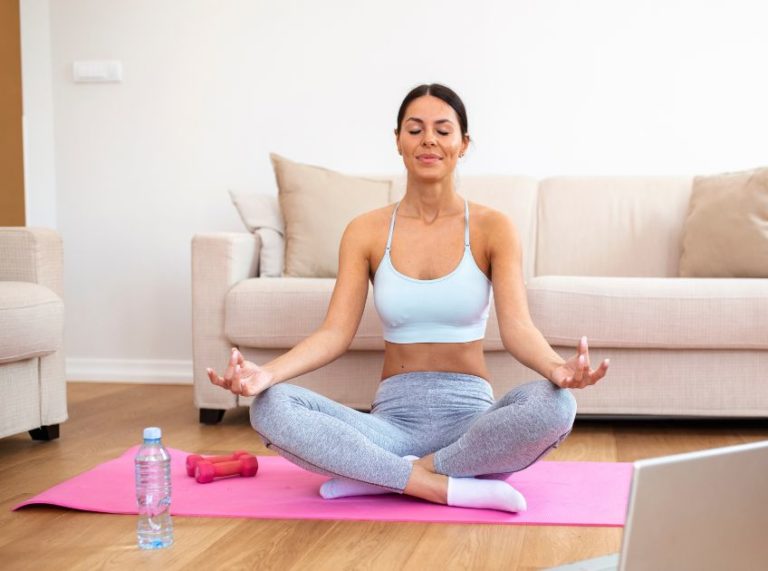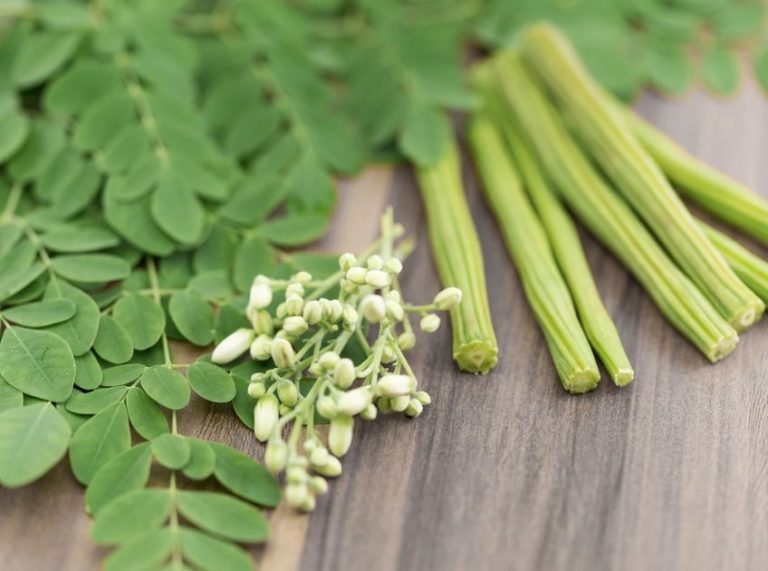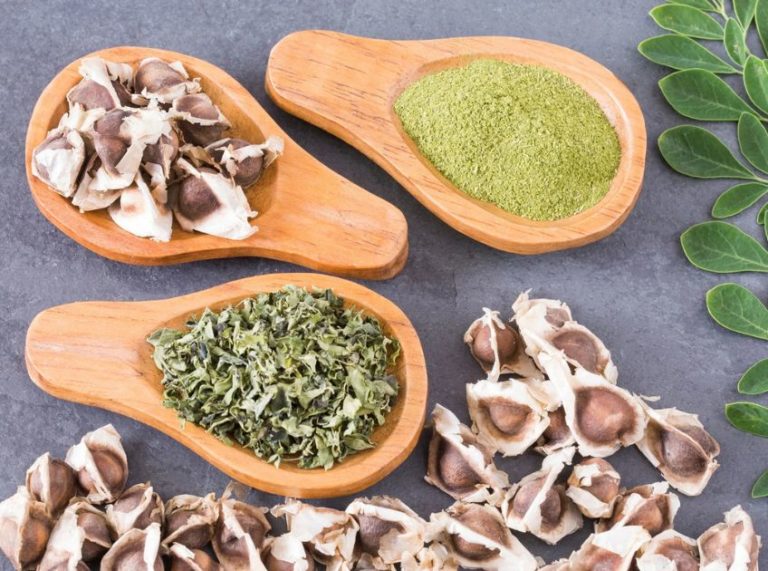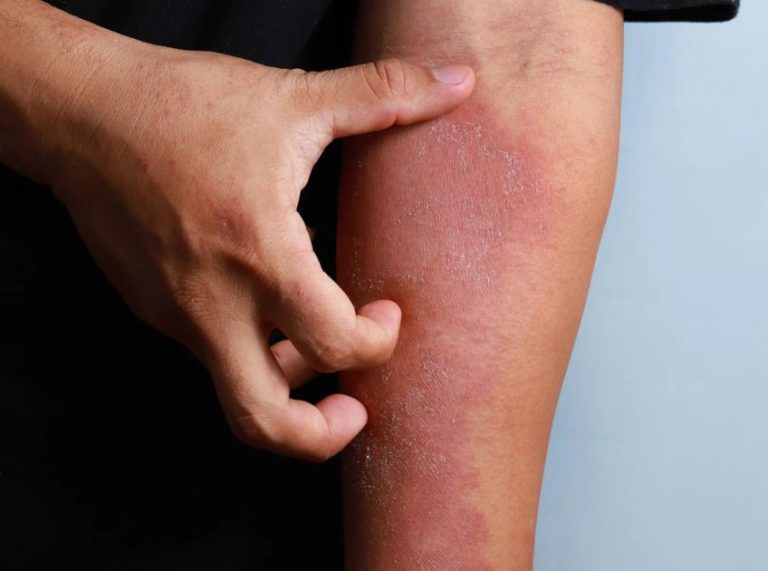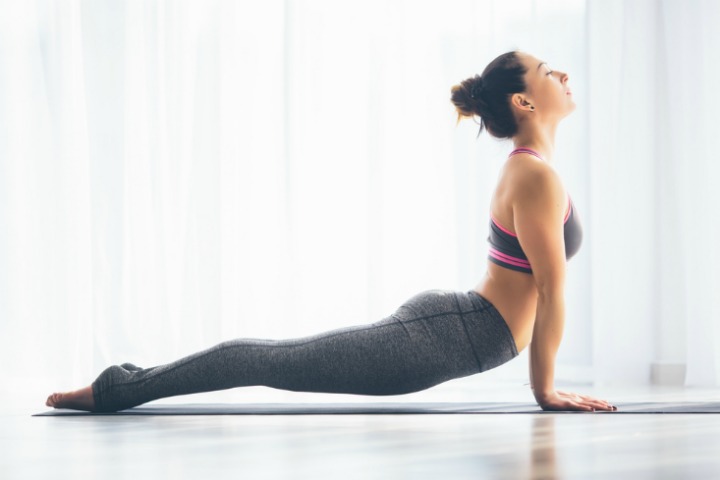
Important: This article is for informational purposes only. Please read our full disclaimer for more details.
Talks about benefits of yoga are infinite. Studies of these 25 yoga poses will help you in all ways of getting yourself fit and healthy. Believe me, there is nothing complicated about it.
Yoga Poses For Beginners
1. Mountain Pose (Tadasana)
Initially, it may seem that you just stand in one place and do nothing. But, this pose helps in finding the balance, improve posture and muscle tone.
How to do:
- Stand up straight and place feet together.
- Pull your knees, hips, buttocks, and abdomen sequentially.
- Relax your abdominal muscles.
- Pull your shoulders back and relax, too.
- Keep your chin straight without dropping or tossing it straightened up as if you pull up for the crown of the head.
- Close your eyes along with breathe slowly and deeply.
- Hold for 40-60 seconds.
2. Chair Pose (Utkatasana)
This simple pose helps to stretch the muscles of the legs, back and shoulders.
How to do:
- Start with the posture of mountain.
- Then put your hands up, keeping them parallel to each other over the head.
- Sit down as if you are standing behind the chair.
- Move your body weight on to your heels by keep your back straight.
3. Modification of the posture “Dog Muzzle Down”
This would be great for those who have problems with body flexibility. It helps to prepare the muscles for standard yoga poses “dog muzzle down” and stretches the hamstrings and improves posture quality.
How to do:
- Stand in front of the chair with the rotated back to you.
- Put on the back of hand and take a few steps back, tilting the body.
- Ideally, your body needs to create a right angle (90 degrees is, if that).
- Keep your back straight and knees by looking down and breathe evenly and deeply.
4. Pose “Downward-Facing Dog” (Adho Mukha Shvanasana)
This classical yoga pose which “opens” both shoulders and stretches the muscles of the thighs lightly. Due to the position of the head (below the heart) this asana creates a calming effect.
Procedure:
- On all fours, rest your palms on the floor and straighten the legs by lifting your buttocks upwards.
- Try to keep your back and legs straight.
- If flexibility is not enough slightly bend your knees.
- Body weight should be distributed between the feet and the palms.
5. Warrior Pose II (Virabhadrasana II)
Of course, the name does not say about Zen but believe me, it is a position helps to calm down and even tightens the legs, ankles strengthen and improve endurance.
How to do:
- Right leg lunged forward.
- The distance between the legs must be equal to the length of four of your feet.
- Turn your left foot such a way that the toes “look” in the direction same as the body and fingers of right foot in forward.
- Bend the right leg until the knees height forming a right angle.
- Raise your hands: the right hand on the right foot, the left hand on the left foot.They should be straight and parallel to the floor line.
- Look forward in the direction fingers of right hand.
6. Triangle Pose (Trikonasana)
This is quite a difficult asana for those who have the flexibility to body. Also good for Developing balance with stretches in hamstrings and inner thighs.
How to do:
- Stand on your feet with wide space in between them.
- Right foot “looks” forward, the left looks in the direction of your body.
- In this position the pelvis slightly unfold also both legs should be straight.
- Raise your hands (not arms) to the side so that they form a straight line parallel to the floor.
- Pull the right hand and body forward; if you’re being drawn to the wall.
- Once you realize that you cannot lower the arm stretch further and put a hand on the floor in front or rear legs. If not, keep your hand on the leg.
- Keep a straight line of hand and look after the left hand.
- Weight must be distributed evenly on both feet and do not allow the deflection.
- Breathe deeply and calmly with concentration.
7. Tree Pose (Vrikshasana)
This position is one of the best for learning balance and also in stretching the ankles and hips.
How to do:
- Initially, stand in a mountain pose.
- Bend your right leg at the knee and move it to one side.
- With the help of the hands (hold the shin) put your right foot at left thigh perpendicularly.
- If you are not flexible enough, rest the foot at knee of your left leg.
- Raise your hands up and drag up the crown.
- Find balance and breathe smoothly and calmly,for best results close your eyes.
8. Bridge Pose (Setu Bandha Sarvangasana)
It helps to stretch the neck and spine as well as to calm the mind, relieve anxiety and improve digestion.
How to do:
- Lie on the floor facing up with knees bent and feet on the floor.
- Put your hands along the body andlift your pelvis up in direction of the body weight concentration in the heel.
- Hold for a few deep breaths and lower pelvis.
9. Bound Angle Pose (Baddha Konasana)
An excellent asana for stretching the inside thighs and groin muscles.
How to do:
- Sitting on the floor, bend your knees and open them wide like a book.
- Put the tip of your fingers on the floor in front of you then drag forward and keep your back straight.
- If you feel this exercise is difficult to do, place a pillow under your buttocks then grasp the ankle with hands.
10. Corpse pose (Shavasana)
This is the easiest posture of all usually asked to do at the last to relax. It relaxes the body and mind, so use it not only at the end of an every hard day.
How to do:
- Lie on the floor facing up, legs straight and slightly apart, hands must be placed along the body.
- Close your eyes and breathe deeply, evenly and slowly.
- Think about something good or just focus on your breathing.
Yoga Poses For Intermediate Level
11. Planck Pose
They say it’s the best exercise for the body, because it trains the press, hips, shoulders, and arms. Try it yourself.
Procedure:
- Take the emphasis by lying and pull your hands under the shoulders (body should form a straight line from shoulder girdle to toe)
- Keep kegs straight without bending at the knees the pelvis does not tend upward abdominal muscles are stretched and tightened as much as possible to the edges.
- Lumbar and feet should be flat to increase the load on abdominal muscles put together.
- The longer you are in this position the better you can achieve results.
- Do not forget to breathe deeply and calmly.
12. Four-Limbed Staff Pose (Chaturanga Dandasana)
This is the key posture for “Sun Salutation”, helps to strengthen the abdominal muscles and triceps.
How to do:
- Stand in a posture plate (facing sky) bend your elbows to a right angle.
- The palms and the tips of the fingers should rest on the floor and placed along the shoulders of the body and parallel to the floor.
- Keep the lower back and shoulders stable from falling down.
13. Upward-Facing Dog Pose (Urdhva Mukha Svanasana)
Open the chest and shoulders by helping to stretch the hips.
How to do:
- Stay in position of staff that is lower body on the floor.
- Now raise and pull the upper part of the body forward and up then straighten your arms.
- Imagine yourself like a cobra.
- The crown must be dragged upwards.
- The palms in this case should be directly under the shoulders.
- Make sure that the shoulders were not sag and pull the chin forward.
- Legs keep straight.If it is difficult, lower your knees slightly to the floor (but do not bend).
14. Half Moon Pose (Ardha Chandrasana)
It helps develop balance in body, stretches the muscles of the legs, hamstrings and hips.
How to do:
- Make a triangular pose and the right hand should touch the floor.
- Support the body weight on the right leg and right arm and lift left leg upwards.
- The left arm should form a straight line with the right.This line of position should be perpendicular to the floor.
15. Warrior Pose I (Virabhadrasana I)
Strengthens the legs, arms and back muscles and prolongs the muscles of the chest, shoulders, neck and hips.
How to do:
- Take a pose of “muzzle the dog down”.
- Place your right foot between forward bent in right angle, shifting body weight on it.
- Slowly lift your body up, keep your back straight.
- Raise your hands up and look at the palm of your hand.
16. Warrior 3 Pose (Virabhadrasana III)
This posture helps in strengthening the muscles of legs, hips and upper back part. As a bonus, it is a great way to learn balancing.
How to do:
- Take the warrior pose I by straightening the bent leg,
- Tilt the body forward (in 90 degrees keeping your arms straight in front direction) and other leg lifted up to backward direction.
- Your body should resemble the letter “T” by balancing whole body on your right leg.
- Keep your back straight, do not bend your knees.
- Breathe evenly and deeply.
17. Dolphin Pose (Ardha Sirshasana)
This posture is not for beginners. Excellent help to stretch the back surface of the legs at the same time calms the mind.
How to do:
- Push forearm and elbows to the floor without folding your kneel.
- In this case, the elbows should be about shoulder width apart.
- Twist the fingers andslowly lift your pelvis as if you are taking a pose “muzzle the dog down”.
- Try not to round your back and relax your neck.
18. Bow Pose (Dhanurasana)
It helps to stretch the muscles of the chest and shoulders, as well as massages the abdominal organs.
How to do:
- Lie on your stomach facing down on the ground.
- Bend your knees and as you exhale, try to grab ankle with hands by lifting the upper part of the body above the floor.
- Balance your whole body only on abdomen part.
- Try to pull the heel to the buttocks and hold in above shown position.
- Breathe evenly and deeply but the chin should be pointing forward and the chest is disclosed.
19. Camel Pose (Ushtrasana)
Opens the front part of the body and get a wide, straighten posture.
How to do:
- Stand on your knees on the floor by keep your back straight and feet arranged wide.
- Begin to lean back bending your back and resting your palms on the foot or ankle backside.
- Put your head facing sky and hold it in line with the spine.Breathe evenly and deeply.
Advanced Level Yoga Poses
20. Side Plank Pose (Vasisthasana)
It strengthens your shoulders, upper back and also helps to find the balance by transferring body weight in to the hands.
How to do:
- Stand in “dog muzzle down” position.
- Transfer your whole body weight in to the right arm and right leg.
- Expand your body in such a way that whole body balanced one side on the floor.
- Left foot put on his right and left hand lift up.Breathe deeply and calmly.
21. Handstand (Adho Mukha Vrksasana)
It strengthens the shoulders, arms and hands also calms and helps to learn balance.
How to do it:
- Stand vertically upside down to a wall along your feet.
- Take a pose of “muzzle the dog down”.
- Take a step by balancing on hands and rise left foot first then bend it at the knee.
- Transfer the weight of the body in to arms and leaned forward on shoulders supported exactly above the palms.
- Give strong push on the left foot and make a wide swing of right foot.
- Put your feet on the wall andreach up the body.
- Take a few breaths and return the leg to the floor.
22. Peacock Feather Pose (Pincha Mayurasana)
This Pose helps you in strengthening your shoulders.
How to do:
- Get whole control of your body by leaning upside down along the wall, lower your forearms on the floor.
- From the walls they must be parallel to the length of your foot.
- Take a dolphin pose and put your hands on the forehead.
- Transfer the weight of the body into the forearms.
- Make a strong push off with the left foot and make a wide swing right foot.
- Put the heel on the wall and reach your body up to the wall.
- Take a few breaths and return the leg to the floor.
23. Crane (Crow) Pose (Bakasana)
This posture is for your arms and shoulders which also strengthens both the abdominal muscles and hips.
How to make:
- Take a mountain pose first and take a deep squat.
- Spread your knees wider than the hips.
- Place palms on the floor in front of you and bend your elbows slightly.
- Push hands inside your thighs to support your legs on the forearms after leaving the floor.
- This keeps your muscles tense.
- After a climb up on toes leaning forwardtake a few springy movements and transfer body weight on your hands by lifting your feet off the floor.
- In fact, this exercise is much easier than it sounds especially, if you have fairly strong shoulders and hands.
24. Chakrasana (Urdhva Dhanurasana)
It helps by stretches in the muscles of back, shoulders, hips and press.
How to do:
- Lie on the floor facing up.
- Bend your knees and place feet as close to your buttocks.
- Place the palms on the floor (on both sides of the head) with fingers pointing towards your shoulders.
- Pull buttocks up and lift your hips off the floor then straighten your elbows and knees as much possible.
- Hold with this position for few breaths and relax with good breath.
25. Boat Pose (Navasana)
This is a good asana for balancing and stretching and muscles of hind legs.
How to do:
- Sit on the floor by pulling the legs forward and keep the body straight.
- Bend your knees and lift your feet off the ground.
- By keeping balance straighten your knees.Your body should resemble the letter V.
- Stretch your hands straight and relax after few breaths.
These all poses can be done by everyone with step-by-step sequentially. The good point to know about this “yogasanas” may also be practised anytime, anywhere and any way. So, Do yoga daily and keep yourself healthy and fit.
You Might Also Like:
- Yoga for Swimmers – 8 Best Poses for Strength and Flexibility
- Box Breathing: The Simple Secret to Calming Your Mind and Body
- 5 Basic Breathing Exercises For A Healthy Life
- Breathing Exercises For Kids: 10 Benefits And Tips
- 5 Easy Facial Yoga Exercises to Reduce Wrinkles
- 35 Benefits of Bikram Yoga
- 50 Amazing Benefits of Deep Breathing
- Yoga for Depression – 6 Effective Poses to Fight Depression
- 5 Best Yoga Poses for Healthy Liver
- Top 4 Yoga Poses to Improve Mental Health
Images:- 1, 2, 3, 4, 5, 6, 7, 8, 9, 10, 11, 12
